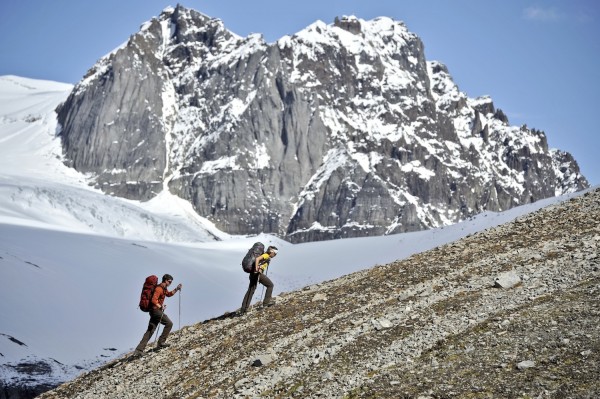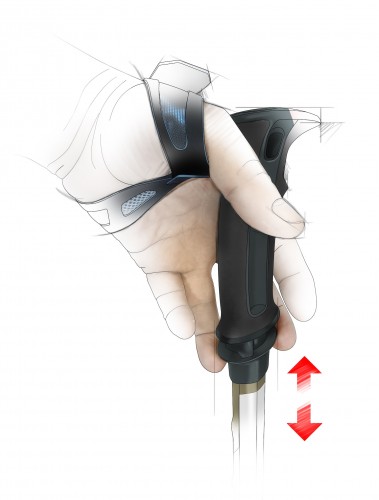Trekking Pole FAQs: Your Questions Answered

As many hikers and backpackers will attest, trekking poles offer great benefits—from helping you maintain stability over changing terrain, to minimizing fatigue and reducing joint impact. Adjustable trekking poles are especially useful for navigating steep inclines and descents, letting you shorten or lengthen poles to match the terrain for improved efficiency. Adjustable poles also pack up easily when not in use.
Here are five frequently asked questions (FAQs) of our customer service department along with information to help you select and use MSR® poles that are right for you, for your environment, and for the activities you like to do.
1. Do I need two-section poles or three-section poles?
Two-section poles are great for activities that require keeping your poles in hand most of the time, such as day hiking or alpine trekking. Three-section poles that stow easily in a pack are ideal for taking with you on trips where you’ll be backpacking or mountaineering, activities that often require the free use of your hands—for example, while scrambling. Three-section poles are also best for fly-to destinations, packing discreetly in your luggage.

2. Which MSR® pole series do I need?
MSR poles are unisex and designed with grips that accommodate a wide range of hand sizes. If you prefer the ease of our Trigger Release poles with one-handed adjustability, choose the Talus™ trekking series. If you are a minimalist who values ultralight weight over convenience of adjustability, you’ll prefer the Swift™ trekking series. Our trekking poles can also be used as winter poles, as they are compatible with our MSR Snow Baskets (which you can purchase separately), and are built with all glove-friendly features.
3. How do I wear the pole strap?
A well-positioned, properly adjusted pole strap will help support your hand through a stride and allow you to transfer your weight to the pole. Slide your hand up through the bottom of the MSR pole strap loop (with the soft surface inside), then grip the pole and adjust the strap so it fits snuggly against the bottom of your hand. MSR poles with Trigger Release let you release the grip and activate the trigger from this position.

4. Swing weight—what is it, and why is it important?
Swing weight refers to how heavy a pole feels to swing when in use. Poles—even lightweight ones—that are designed with more of their weight toward the basket will feel heavier and cause greater arm fatigue over time. MSR poles have their adjustment mechanisms positioned in the upper shaft of the pole rather than the lower shaft, creating a high center of gravity that allows for a smooth and effortless swing.
5. How do I adjust MSR poles with Trigger Release?
Our Talus series trekking poles feature our easy-to-use, patent-pending Trigger Release technology that’s ideal for those traveling through varying terrain. The spring mechanism lets you change the pole length with just one hand on the grip, allowing you to engage and secure the SureLock™ button without removing your hand from the strap. Here’s how to use it:
- Position the strap with the soft surface facing inside. Put your hand up through the loop, reaching back down to grip the pole.
- Adjust the strap so that it’s snug on the bottom of your hand.
- Trap the pole’s basket under your toe. Then, release the grip and with two fingers grab the Trigger Release and pinch it up.
- Finally, extend the pole up and let go of the Trigger Release, allowing the SureLock™ button to click into the next hole. Repeat until the pole is at a comfortable height.

Whether your preferred activity is backpacking, day hiking, thru hiking or mountaineering, trekking poles can make a big difference to your outdoor experience. Give them a try and see how MSR poles will change your expectations of what a pole should be.
